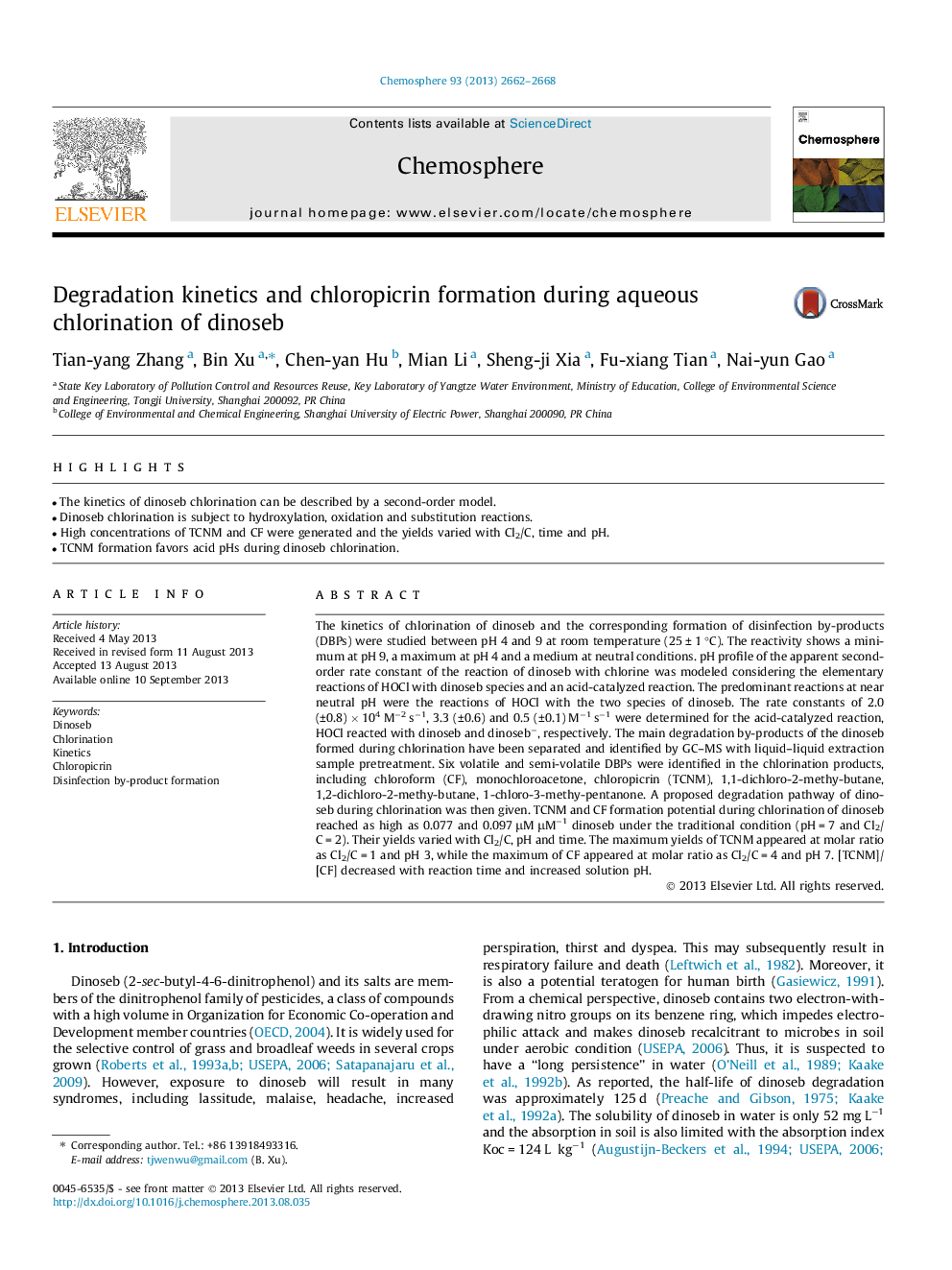| کد مقاله | کد نشریه | سال انتشار | مقاله انگلیسی | نسخه تمام متن |
|---|---|---|---|---|
| 4409090 | 1307463 | 2013 | 7 صفحه PDF | دانلود رایگان |

• The kinetics of dinoseb chlorination can be described by a second-order model.
• Dinoseb chlorination is subject to hydroxylation, oxidation and substitution reactions.
• High concentrations of TCNM and CF were generated and the yields varied with Cl2/C, time and pH.
• TCNM formation favors acid pHs during dinoseb chlorination.
The kinetics of chlorination of dinoseb and the corresponding formation of disinfection by-products (DBPs) were studied between pH 4 and 9 at room temperature (25 ± 1 °C). The reactivity shows a minimum at pH 9, a maximum at pH 4 and a medium at neutral conditions. pH profile of the apparent second-order rate constant of the reaction of dinoseb with chlorine was modeled considering the elementary reactions of HOCl with dinoseb species and an acid-catalyzed reaction. The predominant reactions at near neutral pH were the reactions of HOCl with the two species of dinoseb. The rate constants of 2.0 (±0.8) × 104 M−2 s−1, 3.3 (±0.6) and 0.5 (±0.1) M−1 s−1 were determined for the acid-catalyzed reaction, HOCl reacted with dinoseb and dinoseb−, respectively. The main degradation by-products of the dinoseb formed during chlorination have been separated and identified by GC–MS with liquid–liquid extraction sample pretreatment. Six volatile and semi-volatile DBPs were identified in the chlorination products, including chloroform (CF), monochloroacetone, chloropicrin (TCNM), 1,1-dichloro-2-methy-butane, 1,2-dichloro-2-methy-butane, 1-chloro-3-methy-pentanone. A proposed degradation pathway of dinoseb during chlorination was then given. TCNM and CF formation potential during chlorination of dinoseb reached as high as 0.077 and 0.097 μM μM−1 dinoseb under the traditional condition (pH = 7 and Cl2/C = 2). Their yields varied with Cl2/C, pH and time. The maximum yields of TCNM appeared at molar ratio as Cl2/C = 1 and pH 3, while the maximum of CF appeared at molar ratio as Cl2/C = 4 and pH 7. [TCNM]/[CF] decreased with reaction time and increased solution pH.
Journal: Chemosphere - Volume 93, Issue 11, November 2013, Pages 2662–2668